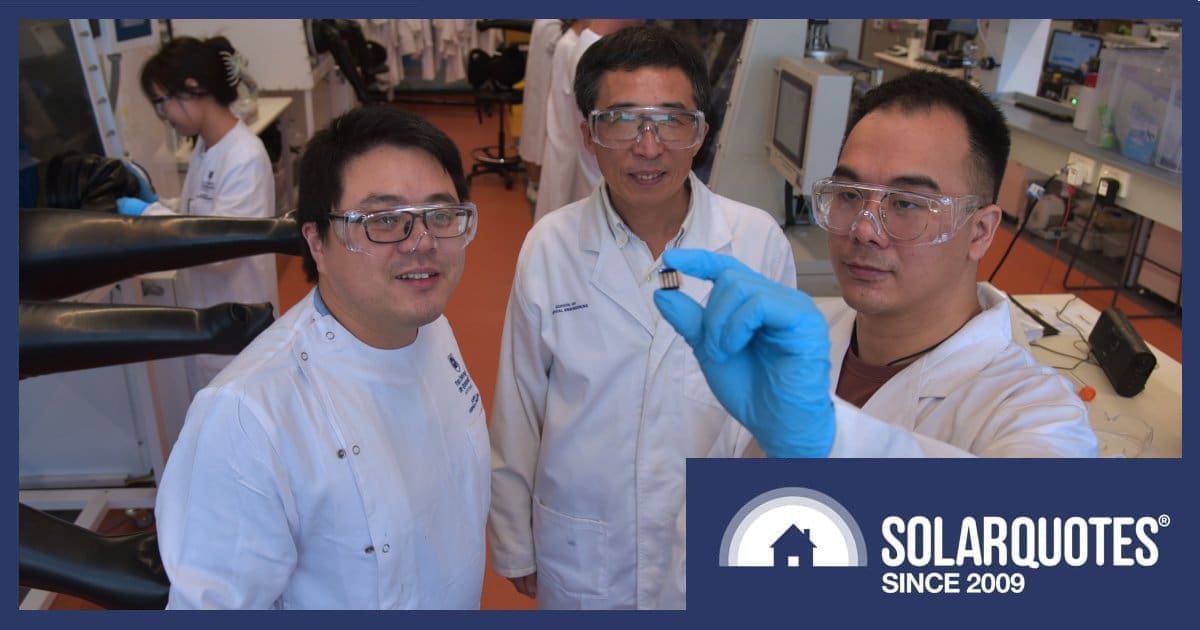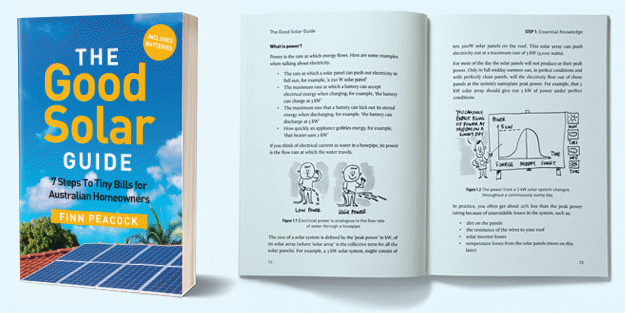
University of Queensland researchers have broken a world record for lead-free tin halide perovskite (THP) technology, and they are as pleased as punch.
Perovskite solar panels have been the next big thing for what seems like forever. While promising even cheaper solar that’s quicker to manufacture, one of the major challenges has been cell stability – and that has been gradually improving.
One of the ways perovskite solar cells can be better stabilised is through the use of lead. However, the solar manufacturing industry has been moving away from the problematic heavy metal that has been primarily used in small amounts in solder; so the use of lead is somewhat of a step backwards.
Some researchers have been tinkering with tin as an alternative. But due to the quality of the thin films used in manufacturing THP solar cells, this resulted in efficiency dips. Led by Professor Lianzhou Wang, the UQ team have overcome this challenge by incorporating caesium ions to improve the microstructure and reduce defects in the THP film.
The result? A certified record efficiency of 16.65 per cent for their (rather tiny) THP cell. If you look at the PV modules listed on the SolarQuotes solar panel comparison table and bearing in mind module efficiency is always less than cell efficiency, this achievement may not appear very exciting. But the team says this is a big deal and now the puzzle has been solved, efficiency will only keep improving.
“It might not seem like much, but this is a giant leap in a field that is renowned for delicate and incremental progress,” said Professor Wang.
The University of Queensland team has high hopes for their THP technology, which they say with further efficiency improvements could be used for home solar panels used both outdoors and indoors.
“There is great commercial potential in THP solar cells because perovskite devices are more sustainable to produce than silicon-based solar cells,” said research group member Dr Dongxu He. “The benefit of THP’s is that we’re dealing with more eco-friendly tin and not the toxic lead that is widely used in most of the perovskite solar cells, meaning they can be safely installed around the home.”
Their research has been published in Nature Nanotechnology – and good luck with digesting all the technobabble.
Trina And Oxford PV Partner On Perovskite
Just briefly and in other related news, perovskite pioneer Oxford PV announced a patent licensing agreement with solar panel manufacturing giant Trina Solar last week. The agreement allows Trina to manufacture and/or sell perovskite-based PV products in China with an additional right to sublicense.
“This agreement is a milestone in our mission to make perovskite PV mainstream and affirms the pivotal role of patents in the photovoltaics of today and the future,” said Oxford PV CEO David Ward.
So, *When* Will Perovskite PV Hit Mainstream?
Well, that’s the multi-billion-dollar question. Commercialisation is already happening in China to some degree, and the future for perovskite – at least initially- looks tandem.
Silicon has served us well and could continue to with perovskite enhancement. By using a monocrystalline silicon-based cell on the bottom and a perovskite layer on top, the theoretical conversion efficiency limit of these tandem cells is up to 43%. The efficiency limit for crystalline silicon-only single-junction solar cells, referred to as the Shockley-Queisser limit, is theoretically around 29-33%.
With big players such as Trina, GCL and JinkoSolar on board with perovskite, the next big thing in PV might finally soon be here.

 RSS - Posts
RSS - Posts



Speak Your Mind